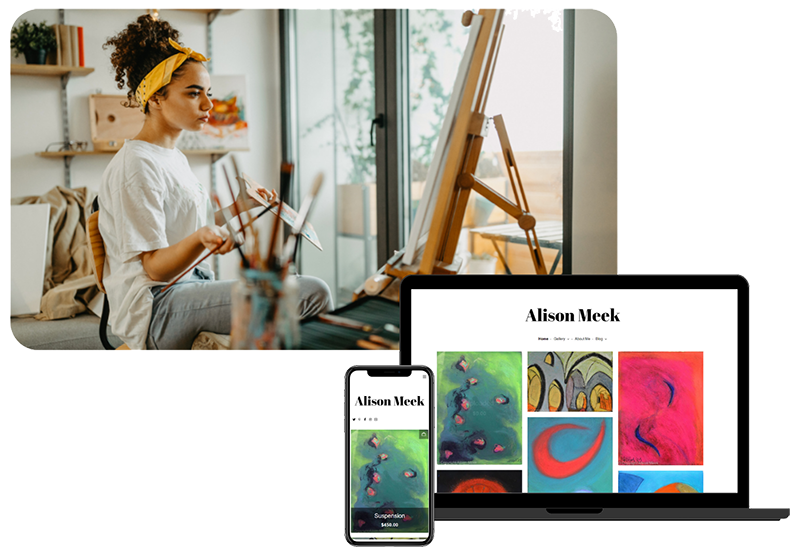The careers of many artists have been built through the support and exposure offered by art dealers, and finding gallery representation remains an important goal for many. As the growth of the internet and social media makes it easier than ever for artists to share their work and sell directly to collectors, should artists still seek gallery representation?

Why should you work with galleries?
Working with a gallery still offers huge commercial opportunities: most established dealers have spent years building relationships with collectors and a database of clients, many of whom may not be actively searching for art on other channels.
Perhaps the biggest draw of working with galleries, however, is the administrative support that they offer: from shipping to invoicing, framing to photography, galleries can take care of the huge number of tasks involved in mounting an exhibition and selling work, allowing artists to spend more time in the studio.
How to find a gallery
When looking for gallery representation, it is important that you feel comfortable showing your work alongside others in the gallery’s ‘stable’, and so investigating who represents the artists that you already admire can be a good place to start. Bear in mind that while some galleries may specialise in a particular style, most will be looking for work that compliments that of their existing artists without being too similar to it. Instagram and online exhibition listings can be a useful tool to find galleries, as can art fairs.
While longevity is no guarantee of future success, many trade associations (such as The Society of Art Dealers) are open only to galleries who have been operating for a certain number of years, and all members are vetted by other professionals before joining. Both have directories of members on their website, with contact details.
How to approach galleries
Before reaching out to galleries, it is a good idea to create a professional-looking website with images of your work; for security reasons, many galleries will not open unsolicited attachments sent by email. Phoning ahead before emailing the gallery a link to your website opens a dialogue with them, and may make your email stand out in their inbox. Although Instagram can be helpful in finding galleries, many social media accounts are handled by junior members of staff or external agencies, meaning that direct messaging often isn’t the most effective way of making contact.
The timing of when you approach galleries is important: check their websites and avoid the opening week of exhibitions and art fairs, when gallerists’ attention may not be fully on their inbox. (Many also close during the month of August.) While you may want to visit a gallery in person to get a feel for the space, turning up with a portfolio without making an appointment is never a good idea, as you may find the gallerist in an important meeting with a client, or filling in their VAT return!
Do not be disheartened if a gallery does not choose to represent you: most set their schedule two to three years in advance, offering little flexibility to offer new artists solo shows. It is always worth asking galleries if they intend to hold any group shows in the future, as submitting one or two paintings to a mixed exhibition can be a lower-pressure way of testing the market for your works among their clientele.
Important questions to ask when joining a gallery
In a world fuelled by personal relationships and ‘gentleman’s handshakes’, not all galleries will have written terms of business, but before entering a partnership it’s worth asking the following questions:
- Will the gallery insure your works while they are in their care?
- Does the gallery expect total exclusivity over your works? Many will allow and actively encourage artists to exhibit their work in public competitions, but be aware that most will expect an artist’s work to be consistently priced wherever it is shown.
- How are selling prices calculated? Before agreeing to wall prices, check whether these include VAT or sales taxes.
- When will you receive payment for sold works?
Finally, it is a good idea to ask galleries for a written consignment note for your work, as many insurance companies require this.
How much commission should a gallery take?
The majority of artists and galleries continue to operate on a 50/50 split of profits, and while this may seem high, it is worth bearing in mind the financial risks that galleries take, and the enormous overheads that they face, including rent, and the cost of exhibiting at art fairs. In 2015, the author Magnus Resch revealed that of the 8,000 galleries he surveyed in the USA, the UK, and Germany, 30% made a loss each year, with half turning over less than $200,000.
Be wary of any galleries that approach you offering to hold an exhibition for a set fee, particularly if you are not able to visit the gallery in person to verify its identity, as this may be a scam. Even if legitimate, this model offers few of the advantages of building a long-term relationship with a gallery, who will continue to offer support and champion your work outside of solo exhibitions.






